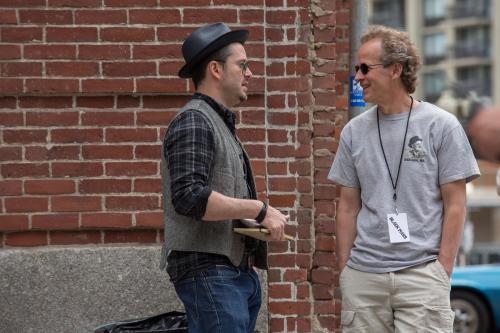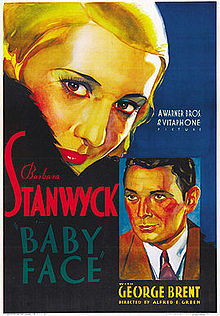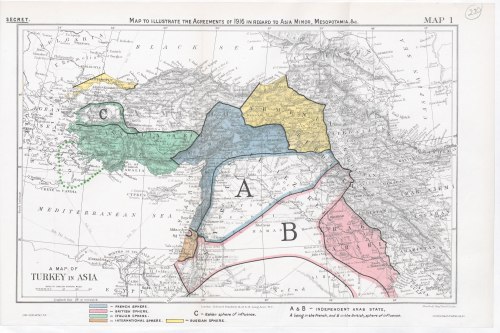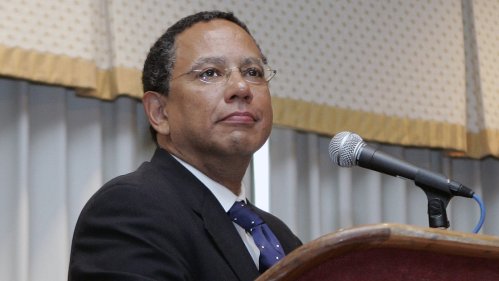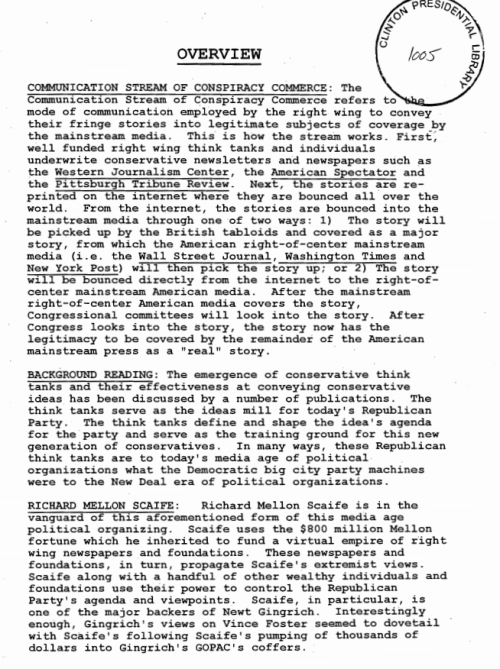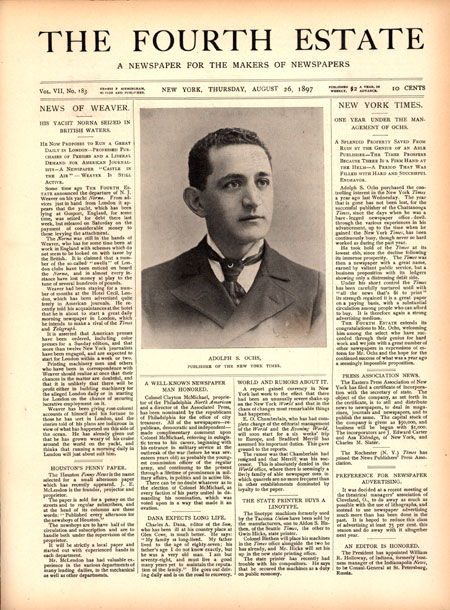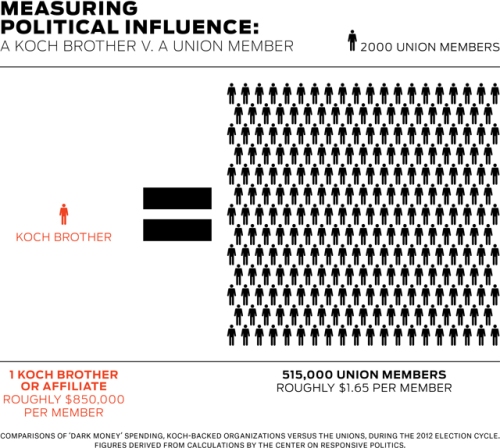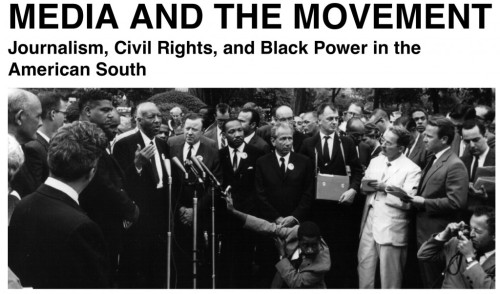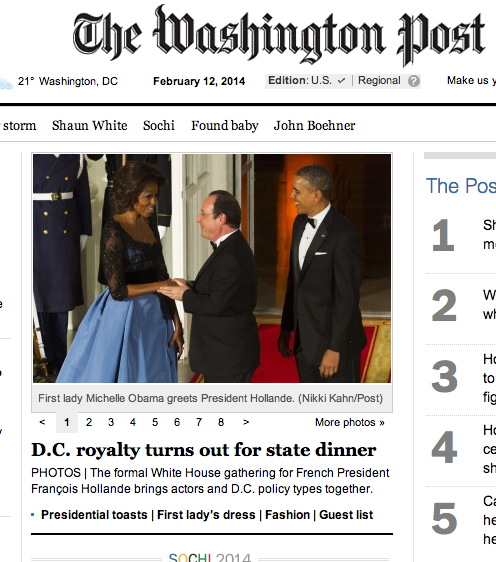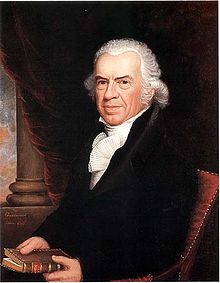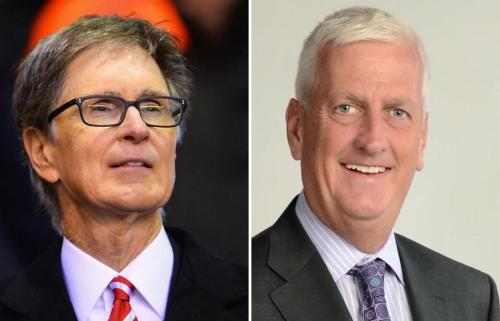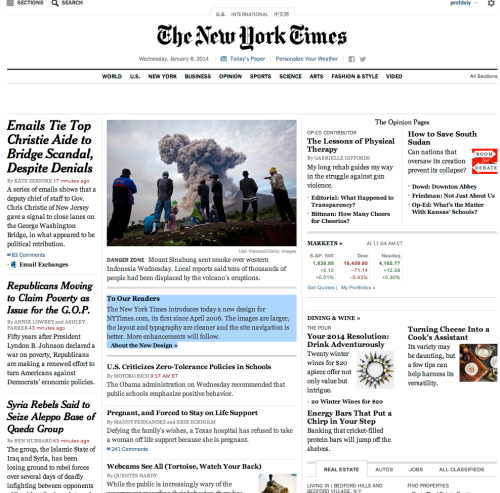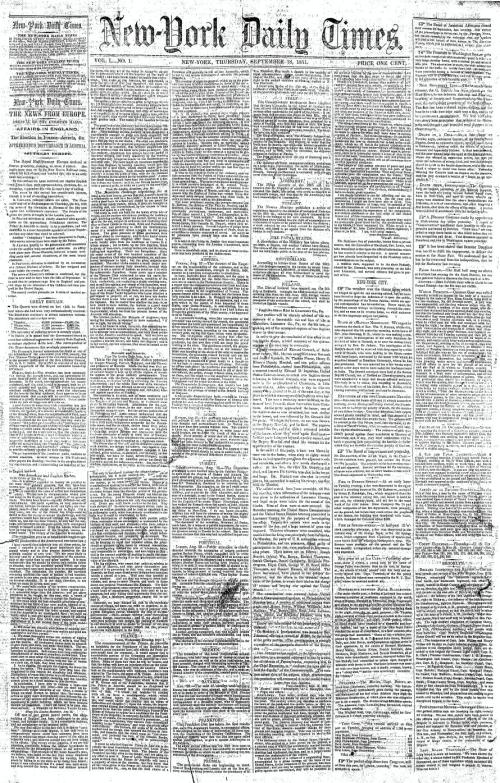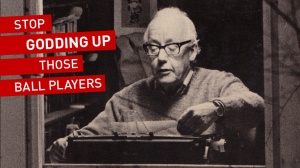
Posts by ChristopherDaly:
Journalism in the movies (Whitey Bulger edition)
August 17th, 2014By Christopher B. Daly.
A tip of the old scally cap to Dick Lehr — my colleague at Boston University and an old friend. He has a front-page piece today in his old employer, The Boston Globe, about his experiences visiting the film sets for the shooting of the feature film being made based on his book Black Mass.
That excellent book, which Dick co-wrote with his former Globe colleague Gerry O’Neill, is the basis for a film being made with Johnny Depp, Dakota Johnson, Kevin Bacon, Peter Saarsgard, and Julianne Nicholson (who should not need any Boston-accent coaching, since she is a native of my hometown — nearby Medford, which was a stronghold of the Italian mafia that Whitey helped to bring down.)
Personally, I am looking forward to the performance of Benedict Cumberbatch as Whitey’s brother, Billy — the former state Senate president, whom I covered from 1983-1989.
Director Scott Cooper (l.) and writer Dick Lehr confer.
Dick told me yesterday that he has been spending a fair amount of time on the set, consulting about details for director Scott Cooper. The Globe says Dick will also have a cameo role in the film.
In his piece today, Dick struggles to describe his feelings as an author seeing specifics from his own reporting rendered into scenes and dialogue. Most compelling is the performance of Johnny Depp, who has occupied the role of the gangster and murderer Whitey Bulger. According to Lehr:
Whitey is fully in command, cold and calculating. In a close-up, there’s that terrifying look in his eyes. When the director yells, “Cut,’’ the filmmaking spell may be broken, but everyone viewing in the video tent stays quiet, still mesmerized, as a big chill lingers from the scene just finished a few yards away.
He compares his own experience as a journalist/writer to the reaction recorded by Truman Capote on the set of the filming of the movie “In Cold Blood,” based on his true-crime story. In Dick’s version:
Truman Capote once wrote an essay about visiting the set during the 1967 filming of his book “In Cold Blood,” and I wish I could compose lines as artful as his to describe the experience of seeing an actor who has brought an antagonist you know to life.
“I thought a ghost had sauntered in out of the sunshine,’’ he wrote about seeing Robert Blake for the first time portraying the killer Perry Smith. Capote said he had trouble processing the “mesmerizing reality’’ of the actor cast as Perry, because he was Perry, and that’s how it was with Johnny: He was Whitey. It was disorienting, “like a free fall down an elevator shaft,’’ as Capote put it. “The familiar eyes, placed in a familiar face, examining me with the detachment of a stranger.”
 All of which brings to mind the larger trend of works of journalism in the hands of filmmakers — either Hollywood feature
All of which brings to mind the larger trend of works of journalism in the hands of filmmakers — either Hollywood feature  film directors or documentarians. Over the decades, plenty of true stories have been told first by journalists and then by filmmakers. From Guadalcanal Diary(book by Richard Tregaskis, film by Lewis Seiler) to The Perfect Storm (book by Sebastian Junger, film by Wolfgang Petersen) and on to the current filming of Black Mass, it has been a long and productive alliance.
film directors or documentarians. Over the decades, plenty of true stories have been told first by journalists and then by filmmakers. From Guadalcanal Diary(book by Richard Tregaskis, film by Lewis Seiler) to The Perfect Storm (book by Sebastian Junger, film by Wolfgang Petersen) and on to the current filming of Black Mass, it has been a long and productive alliance.
What are your favorite examples of works of journalism providing the basis for films? Let’s get a list going.
Comments Off on Journalism in the movies (Whitey Bulger edition)
The dinosaurs of old media still shake the earth
July 18th, 2014By Christopher B. Daly.
Is all the coverage of Rupert Murdoch’s play for Time Warner a bit of an over-reaction?
The NYTimes, for example, cleared the decks and went all-in, devoting nearly a double truck of today’s Business section to coverage of an 83-year-old business mogul who wants to take over a 91-year-old media company.
Here’s a column/story by Boston University professor David Carr and more stories here, here, and here.
So, it turns out that Murdoch wants to own the company that is a distant relative of the company founded in 1923 by Henry Luce, one of the earliest of the modern media moguls. Luce created TIME magazine with his co-founder and frenemy Briton Hadden, and in its day, TIME was the cool new thing. Over the decades, Time Inc. added more magazines that became household names —Fortune, Life, SI, People, etc.
As I wrote in my book Covering America, Luce used his midas touch with magazines to become a wielder of great influence in American politics, culture, business, and foreign policy. In the late 20th Century, Luce’s successors made a series of mergers and acquisitions that transformed a magazine publisher into a multimedia giant. More recently, the company’s executives decided to spin off the print properties, leaving Time Warner as a company with a desirable core of television and film content-makers. That’s what Murdoch wants.
Murdoch himself went through a similar process of corporate cell division last year, dividing his News Corp. into separate print and video divisions. He is using his profitable new company, 21st Century Fox, to gobble up Time Warner. If he succeeds, as he might, it would also represent the final victory of 20th Century Fox movie studios founder Daryl F. Zanuck over his great Hollywood rival, Jack Warner. (Ironically, Zanuck learned the business at Warner Bros., making his bones with “Rin Tin Tin” but left after creative differences with Jack Warner over the making of “Baby Face.”)
It’s hard to find anyone to root for in all this.
Comments Off on The dinosaurs of old media still shake the earth
Iraq: Why journalists should study history
June 13th, 2014By Christopher B. Daly.
As I like to say: History keeps happening.
The events of recent days in the part of the world known as Iraq cannot be understood or explained without mastering a lot of history, going back well before the U.S. invasion and occupation. A good starting point for journalists covering the region (or merely pontificating about it) and for news consumers would be this map, drawn up in secret by the Great Powers who won World War I. In this historical map from 1919, British and French diplomats literally drew lines across the sand and decided how to divvy up the remains of the defeated Ottoman Empire.
(Don’t miss: the notation “secret” on the upper left.)
This map shows how the European powers essentially created Syria (A) and Iraq (B) without regard for traditional ethnic, religious, tribal, or commercial interests. There was no plebiscite, no consultation with local leaders. That’s the fundamental (modern) problem in the region.
To zero in on Iraq at present, here’s a valuable recent map from theWashington Post, showing a much-needed degree of granularity that goes beyond the artificial “national” boundaries. At a glance, the grey area suggests the need for an independent Kurdistan. The green area from Baghdad to the Gulf suggests the contours of a smaller country populated by Shiites. The yellow areas may well make more sense as a new Sunni country that includes parts of Syria.
My suggestion: Don’t listen to any journalist, analyst, or U.S. politician who could not intelligently discuss these maps for at least an hour in an informed way.
[My personal view: these are not real countries with genuine borders, so they cannot be effectively governed by anyone until borders are brought in line with social reality. In any case, this is not a U.S. problem. This region belongs to the people who live there. If they want to have a civil war or a religious war, they are entitled to have one. If any outside parties bear any responsibility, it would be the British and the French.]
Comments Off on Iraq: Why journalists should study history
If you make journalists criminals, then only criminals can be journalists
June 6th, 2014By Christopher B. Daly.
It’s no surprise, I suppose, that the U.S. Supreme Court has rejected an appeal from a New York Times reporter who has been seeking to avoid being sent to jail for his refusal to testify about his sources. The ruling is a setback for reporter James Risen and for the entire enterprise of journalism as well. The reason: the high court cannot find protection for reporters in the U.S. Constitution.
The First Amendment famously says (in part): “Congress shall make no law . . . abridging the freedom of the press.” As I have written, I believe that the First Amendment goes beyond the right to disseminate news and includes the right to gather news. In some situations, that news-gathering function, also known as reporting, may require reporters to extend a promise of confidentiality to a source. I believe that they have a constitutionally protected right to do so. (Actually, to be precise: I believe that you and I and the rest of theAmerican people have the right to learn what the journalist can learn — that is, we are entitled to information, especially controversial, secret information, that will enable us to make good decisions about powerful institutions.)
Many people disagree. They invoke the ancient legal doctrine which holds thatjustice demands every person’s testimony — no exceptions (oh, except for the “testimonial privilege” widely granted to clergy, attorneys, spouses and others — plenty of people enjoy the right not to testify with no deleterious effects on society). Superficially, this makes a certain amount of sense. But it overlooks the chilling effect on both sources and reporters if journalists can be dragged into court and ordered, under oath, to break their word and reveal the identities of their confidential sources. The fully predictable result of this doctrine will be that the people will not learn all that they might about difficult, hidden truths.
And a word here about criminal justice. Obviously, the investigation, prosecution, and punishment of crime is an important value in society. I would not want to live in a society that did not suppress crime. But we must bear in mind that law enforcement is not a transcendent value; it is not so important that it can be used to sweep away all other rights and values. It has to be balanced against other important priorities (like being secure in our persons and papers).
I maintain that it is better for a handful of prosecutors to miss out on the testimony of a handful of people than it is to impose blinders on the press. I don’t want to live in that kind of society, either. Prosecutors pursue justice; journalists pursue truth. Those are both important, and sometimes allied, enterprises. But they are not identical, and when they conflict, my default position would be to privilege truth-seeking.
Also, bear in mind: prosecutors have plenty of techniques and powers that journalists don’t have.
–They have the power to subpoena (non-journalist) witnesses and question them under oath.
–If witnesses lie, prosecutors can charge them with perjury.
–Prosecutors have the power to induce suspects to talk by negotiating plea-bargains.
–Prosecutors have the home-team advantage in every courtroom in the country.
–Prosecutors have the power to get a search warrant and spy on suspects.
If prosecutors can’t solve a particular crime with all those powers (which journalists don’t have), then maybe they’re just not trying hard enough.
One implication of today’s Supreme Court ruling: until there is a new array of justices on the high court who properly understand the Constitution, I guess the only remedy is to support legislation (S. 987) to create a federal shield law for reporters. Incidentally, most states already have shield laws that protect journalists in state courts, and we have not suffered any terrible crime wave as a result. All those state AGs and DAs somehow manage to live with laws that uphold press freedom and balance it against the imperatives of law enforcement.
Comments Off on If you make journalists criminals, then only criminals can be journalists
NPR explains change at NYT
June 1st, 2014By Christopher B. Daly.
Hats off to NPR’s estimable media reporter, David Folkenflik, for a thorough, calm, balanced, well-reported piece about the recent succession crisis at the New York Times. What distinguishes Folkenflik’s work from a lot of what I have read is that it is based on original reporting. He conducted the first interview I’m aware of with the new executive editor, Dean Baquet, and his decision to seek out Amanda Bennett was smart.
editor, Dean Baquet, and his decision to seek out Amanda Bennett was smart.
I was out of the country when the news broke about the dismissal of Jill Abramson (full disclosure: we went to college together long ago; actually, Amanda Bennett was there, too), so I refrained from saying anything about it after I got back. I read a lot of other people’s “work,” though, and found that most of it was armchair speculation, Monday-morning q’b-ing, and pure projection. So, thanks to David F for actually expanding the universe of known facts, upon which the rest of us can get busy speculating.
(And thanks for helping us learn how to pronounce the new guy’s name! Sounds like “bah-KAY”)
Dean Baquet, the new executive editor of The New York Times
Baquet, the new executive editor of The New York Times
Photo: Bill Haber/AP
Comments Off on NPR explains change at NYT
Remembering a funny journalist: Art Buchwald
May 17th, 2014
By Christopher Daly.
I am very pleased to have had the chance to write about Art Buchwald. I grew up reading Buchwald’s syndicated column in the pages of the Boston Globe, so I jumped when the online project American National Biography asked me to research his life and write about him.
[ANB is a publishing project in partnership with Oxford U Press, and I was hoping that they could include some illustrations, but they could not. So I am posting one of my favorites here at the top of this post.]
Enjoy.
Comments Off on Remembering a funny journalist: Art Buchwald
Inside the meme factory: The Clintons figured this out long ago
April 30th, 2014
By Christopher B. Daly.
When Hilary Clinton complained back in 1995 of a “vast right-wing conspiracy” trying to bring down her husband, she was not wrong. In fact, she and her husband’s political advisers were onto something: the interlocking network of conservative institutions set up since WWII to American politics to the right. As the Clintons realized, the right-wing think tanks and the right-wing media were mutually supportive in their campaign to concoct conservative political themes and inject them into the mainstream media. (Whether this system qualifies as a “consipracy” is a fine point, but Hilary was right to be paranoid: people wereout to get her.)
A new batch of disclosures from the Clinton presidential library lay out the Clintons’ grasp of this phenomenon, circa 1995. They rightly identified Richard Mellon Scaife as a major source of funding for both conservative think tanks and media.
Scroll down past the heading sheets for a fascinating glimpse inside this usually hidden world.
Comments Off on Inside the meme factory: The Clintons figured this out long ago
NY Times tiptoes closer to the F-word. Oh, my!
April 9th, 2014By Christopher B. Daly.
The New York Times has a very uncharacteristic Op-Ed column today by lexicographer Jesse Sheidlower arguing that the Times should get in step with the rest of society and start printing a word we all know that begins with “f” and ends with “uck” (and it’s not firetruck!).
O tempora, o mores!
When Adolph Ochs bought the New York Times in 1896, he had high aims. The patriarch of the family that still owns the newspaper — and still sets its editorial direction — wanted above all else to appeal to an
elite audience. His business model was predicated on the idea that he could survive in the crowded New York City market with a smaller audience than the vast audience of workers, tradesmen, and immigrants that Pulitzer and Hearst were catering to, provided that the Times’s readers were wealthier, which would make them more attractive to advertisers. So, he set out to distinguish his paper from the popular “yellow press” papers of Hearst and Pulitzer, which dripped gore and sex. They were read by chambermaids and stevedores, and Ochs wanted no part of them. He was aiming for the upper classes, and he presumed that they preferred a more-decorous approach.
So, in addition to his famous motto “All the News That’s Fit to Print,” he also spelled out his credo in a statement to his readers. He promised that the Timeswould not “soil the breakfast cloth” — meaning that families could bring his paper to the breakfast table (which would have a table cloth, because Timesreaders could afford them) and not have to worry that it would besmirch the conversation or corrupt the children. In fact, Ochs declared his intention that the Times would deliver the news “in language that is parliamentary in good society.”
Thus, it would appear that proper language is part of the paper’s DNA, and the Times has certainly been culturally conservative in the sense that it has been reluctant to depart from the late-Victorian standards of propriety and vulgarity laid down by the current publisher’s great-grandfather.
Of course, it is a fair question to ask how many families gather around the breakfast table sharing the print edition of the Times and how many families are succeeding in preventing their children from learning the f-word.
Pretty fucking few, I’d bet.
Comments Off on NY Times tiptoes closer to the F-word. Oh, my!
What if traffic metrics had been used throughout journalism’s history?
March 31st, 2014By Christopher B. Daly.
The original moonbats.
New York Sun, 1835
That’s a question that came to mind today while reading David Carr’s latest. In his column, Carr identifies a trend (at least, a trend by journalism standards) of news organizations paying their contributors based on how much traffic their individual “stories” garner. If an item is really popular and brings a lot of eyeballs to the site, the “writer” of the piece earns more money. Conversely, if you write pieces that hardly anyone look at, you get paid less — or nothing.
It all sounds simple and fair and transparent and populist. (This approach puts the “piece” in piecework with a vengeance.)
Only it’s not. The problem with this approach is that it doesn’t take into account that journalism has other values besides popularity. Yes, we want readers/viewers, and we want as many as we can get. But we also want to serve our society by occasionally embarking on stories that are so expensive to investigate that they will never pay back any return on the investment of resources put into them. Or, we sometimes work on stories that matter intensely to a small group of people. And, from time to time, we run stories that turn just about everyone off but still make the world a slightly better place.
Let’s consider how a “metrics model” would have served journalism (and the world) over the last couple of centuries.
–The first story about sexual abuse by Catholic priests was hardly a candidate for “most-read” and yet it began a tidal wave of reporting that ultimately rocked the Vatican.
–The first Watergate story (the one with Al Lewis’ byline, on June 18, 1972) had only a tiny fraction of the readership that the “last” Watergate story 26 months later (the one with the headline “Nixon Resigns” on Aug. 9, 1974)
–Then there was Sy Hersh’s original story about Lt. William Calley and the massacre at My Lai.
One takeaway from those historical cases: some stories need time to build.
–Or what about the columnist Westbrook Pegler? Incredibly popular, but a crackpot who was wrong about everything. His metrics would have crushed the likes of Walter Lippmann (in terms of actual readers, not just people who said they read Lippmann.)
–The first-day stories about the Gettysburg Address barely mentioned Lincoln’s little speech, because (by the lights of the day) it was considered dull and inconsequential compared to the stem-winder of a speech given by the day’s main speaker, Edward Everett. (Who?)
–For a few weeks in 1835, the New York Sun had a wildly popular (and exclusive) story about life on the moon. The paper really racked up eyeballs — until the story was revealed as a hoax. Oh, well. It sure sold papers.
–Or, how about the summer and early fall of 2001? The media were in full cry to “prove” that
Egregious illustration of Chandra Levy.
the disappearance of a missing Washington intern, Chandra Levy, was somehow connected to married congressman Gary Condit. (Who remembers them now?) You could look it up: this was a huge story for months in 2001, right up until 9/11. Anyone want to go back there?
Just as some stories need time to develop, some writers need time to develop.
What was Samuel Clemens’ first story, for the Territorial Enterprise in Virginia City, Nevada? If he had not been given time to develop as a writer, he would have ended up as the funniest steamboat pilot on the Mississippi, but there’d be no Innocents Abroad (his first big success), not to mention no Huckleberry Finn. What about the first news stories ever written by Ernest Hemingway? Is there a new Martha Gellhorn or Joan Didion chasing clicks today at Gawker?
If we only work on stories that are popular, we might soon become so popular that we won’t matter any more.
Comments Off on What if traffic metrics had been used throughout journalism’s history?
Math for journalists (Koch edition): Free spending is not free speech
March 20th, 2014By Christopher B. Daly.
Kudos to The New Republic for this takedown of a recent Wall Street Journal editorial. The Murdoch newspaper was trying to gin up sympathy for the Koch brothers, the fossil-fuel billionaires who pour big money into the conservative Meme Factory and into political campaigns. The Journal tried to make the case that the Kochs have actually been outspent by organized labor — without noting that there are two Koch brothers and 14.5 million labor union members. When the Kochs are treated as individuals (as the Constitution would indicate), the TNR piece calculates that each Koch brother is exercising the same level of “political speech” as about half a million union members.
Can anyone really argue that amplifying those two voices by the millions of dollars they have to spend makes the country a better place? Does their wealth make their ideas more worth listening to? Does their wealth make them wiser? Does it mean they love their country more than others? Why should they have a megaphone that their neighbors do not have? If they want to speak, let them speak. If they want to publish, let them publish. And let them do so without limitation. But spending money is not protected by the First Amendment (and nor should it be).
As a First Amendment militant, I believe speech should be free. It shouldn’t be paid for.
[Note: the following graphic is merely suggestive. For it to be accurate, it would have to include hundreds of thousands of separate tiny images for union members.]
Comments Off on Math for journalists (Koch edition): Free spending is not free speech
Inside the Meme Factory: Conservatives gin up “studies” to suit needs
March 7th, 2014By Christopher B. Daly.
Here’s a peek inside what I call “the Meme Factory” — the interlocking set of institutions that conservatives built, mainly since WWII, to manufacture “studies,” slogans, and ideas that could probably not pass muster at most universities or scholarly journals but are very useful to the conservative movement. Briefly, the way it often works is that a conservative funder or activist has a notion. The notion is taken to a conservative “think tank,” where it can be refined, simplified, and outfitted with some academic-sounding “research.” The whole package can be offered to sympathetic conservative “journalists” who work at conservative media outlets like Fox, National Review, Newsmax, Breitbart, etc. Then, when real scholars and responsible journalists ignore it, conservatives can cry foul and denounce everyone else as “biased.”
Today’s case in point: a story in the NYTimes not about this phenomenon but which nevertheless reveals a bit of how this system operates. The story naturally focuses on the latest developments. Igt is essentially a “stage-setter” for a hearing set for Tuesday in a federal court in Detroit over the suitability of same-sex couples as parents. But it’s the backstory that really deserves equal attention:
–To start at the beginning, in August 2010, a federal judge in a different federal court in California writes in a ruling that he found “no reliable evidence that allowing same-sex couples to marry will have any negative effects on society.”
–Alarmed, conservatives swing into action.
–In late 2010, they gather at the Heritage Foundation in Washington, one of the central nodes in the Meme Factory. According to the Times, “opponents of same-sex marriage discussed the urgent need to generate new studies on family structures and children.” In other words, they wanted to commission studies whose outcome was pre-determined.
–Result: “the marshaling of $785,000 for a large-scale study by Mark Regnerus, a meeting participant and a sociologist at the University of Texas who will testify in Michigan.” The money comes from two conservative foundations: Witherspoon and Bradley.
–His study comes out in 2012 in the journal Social Science Research, and conservatives immediately start citing it. No surprise: the study “finds” that children do best when raised by their own straight, married, monogamous parents.
–Scholars criticize his methods and motives, prompting the journal to launch an internal audit of its own procedures. Basically, the folks at Social Science Research need to determine how they got so badly used in this case.
–No matter. The Meme Factory has delivered: a study, a controversy, victim status, and news coverage.
Who says American manufacturing is dying?
Below, as a public service, I offer a version of a work in progress. It’s a timeline of the interlocking institutions that make up the Meme Factory — think tanks and media outlets. You’ll notice that some names crop up again and again: Scaife, Mellon, Murdoch, Kristol.
(Please help me fill in any blanks.)
CONSERVATIVE MEDIA AND INSTITUTIONS
A TIMELINE
Compiled by Christopher B. Daly
MEDIA OUTLETS
Debut Name Owner/Founder
(not to mention: WSJ, Chi Tribune, LA Times, US News, Reader’s Digest, Forbes, etc)
1944 Human Events Henry Regnery et al.
1955 National Review William F. Buckley Jr.
1965 Public Interest Irving Kristol (folded, 2005)
1967 American Spectator R. Emmett Tyrrell Jr./Regnery
196? Commentary (turns right) Norman Podhoretz/
1968 Reason (libertarian) Robert W. Poole Jr.
1975 Conservative Digest Richard Viguerie
1982 Washington Times Rev. Moon/Unification Church
1985 The National Interest Irving Kristol
1988 Rush Limbaugh Limbaugh/Clear Channel
1995 Weekly Standard Murdoch/News Corp/ Wm Kristol
1995 Townhall.com offshoot of Heritage
1996 Fox News Ailes/ News Corp. (Murdoch)
1996 The Drudge Report Matt Drudge
1996 Free Republic (website) James C. “Jim” Robinson
1997 World Net Daily Jos.&Eliz. Farah
1998 Newsmax Media Christopher W. Ruddy (Scaife)
2001 InstaPundit Glenn Reynolds
2002 The American Conservative (mag) Pat Buchanan, Taki, et al.
2002 Glenn Beck Radio Program Glenn Beck
2007 Breitbart.com Andrew Breitbart
INSTITUTIONS [major donors: Olin, Coors, Scaife, Richardson, Bradley]
1943 American Enterprise Institute big business
1947 Regnery Publishing Eagle Publishing
1957 Hoover Institution ?????/ Stanford
1960 Young Americans for Freedom William F. Buckley
1961 Christian Broadcasting Network Pat Robertson
1963 Oral Roberts University Oral Roberts
1969 AIM Reed Irvine
1973 Heritage Foundation Paul Weyrich (Coors)
1975 Eagle Forum Phyllis Schlafly (radio, Web)
1977 Cato Institute Edward H. Crane (Koch, Olin, Scaife, Bradley)
1977 Focus on the Family Dr. James Dobson
1977 National Journalism Center M. Stanton Evans (Buckley; YAF))
1978 Inst. for Educational Affairs Irving Kristol/William E. Simon (Olin, Scaife, Richardson)
1979 Moral Majority (thru 1989) Weyrich, Viguerie, Falwell.
1982 Federalist Society Edwin Meese, Robert Bork, Olson
1987 Media Research Center L. Brent Bozell III
1997 Project for New American Century Wm. Kristol / Robert Kagan
Comments Off on Inside the Meme Factory: Conservatives gin up “studies” to suit needs
Civil Rights journalism
February 22nd, 2014By Christopher B. Daly.
A hat-tip to the now-estimable Southern Oral History Program, which once operated out of the smallest room on the campus of UNC-Chapel Hill, back in the early 1980s, when I worked there briefly as a researcher/cataloguer.
The program, founded 40 years ago and directed for decades by Prof. Jackie Hall, has grown into a powerhouse of teaching and conducting oral history.
Among many projects is one involving journalism history. The SOHP’s “Media and the Movement” blog contains links to audio clips, photos, video, and more. It’s a great resource for anyone interested in the journalism of the “long civil rights movement” in the United States.
[p.s. So pleased to see that the motto of the SOHP is this quote from textile millworker Nell Sigmon: You don’t have to be famous for your life to be history. My co-authors and I used that very quote as an epigram in the Preface to our book Like A Family, a history of the industrialization of the South, which grew out of the SOHP in the 1980s.]
Comments Off on Civil Rights journalism
Memo to WashPost: No royalty here!
February 18th, 2014By Christopher B. Daly.
How do these things happen?
Here’s the most prominent part of the homepage for today’s Washington Post, the morning after a state dinner held at the White House for prominent French bachelor Francois Hollande.
That headline: “D.C. royalty turns out for state dinner” is a stunner.
Royalty? Really? The word is not even placed inside quote marks. Just presented as a matter of fact? Aw, c’mon.
We all know that Post editors intend it as a kind of shorthand for the American establishment (which, btw, includes a lot of people who live far from the District in such remote outposts as New York, Hollywood, and Kentucky).
It would be tiresome and pedantic to point to the U.S. Constitution, Article I, Sec. 9:
No Title of Nobility shall be granted by the United States: And no Person holding any Office of Profit or Trust under them, shall, without the Consent of the Congress, accept of any present, Emolument, Office, or Title, of any kind whatever, from any King, Prince, or foreign State.
That about covers it. How could anyone at the Post seriously entertain the notion that the guests at the White House constitute “royalty”? Have they been watching too much “Downton Abbey”? Or, do they really think they are that special? The Post certainly didn’t help itself today, especially among us citizenspeasants out in the provinces.
Vive la Republique!
==========
In other social notes: I see that among the guests was Jill Abramson, theNYTimes executive editor. According to the official guest list from the White House, her escort was not her husband (Henry Griggs) because most guests are invited alone and paired with another guest. Jill was paired with a man named William Woodson, who was not further identified. Was it the author or theactor?
Comments Off on Memo to WashPost: No royalty here!
The history of journalism lives on in Worcester
February 11th, 2014By Christopher B. Daly
Here’s a recent article in Worcester magazine introducing readers to the incomparable American Antiquarian Society. It sounds like a museum of antiques, but it is actually the most extensive collection of American newspapers, pamphlets, lithographs, sheet music, and ephemera from the 17th century through the late 19th century.
From the article:
A few of the Society’s most valued materials include a first-edition copy of Lewis and Clark’s journals, printed in the early 1800s; the first printed Bible in British North America, released in 1663; the only known copy of the famous English book “Pamela,” which was the first book printed
in the United States, published and sold by Benjamin Franklin; and the only known original copy of the political cartoon “The Philosophic Cock,” which was an early slam of Thomas Jefferson’s relationship with Sally Hemings, depicting Jefferson as a rooster and Hemings as one of his hens. At the end of last year, one of the few remaining copies of the first book ever written and printed in British North America, in 1640, the Bay Psalm Book, sold at auction for $14.2 million – the American Antiquarian Society just so happens to also have an original copy of the book.
The AAS attracts scholars from around the world, including Ken Burns and Jill Lepore, and it is open to the public.
Here’s a note on the AAS’s history from Wikipedia.
AAS was founded by Isaiah Thomas on October 24, 1812 by an act of the Massachusetts General Court. It is the third oldest historical society and the first to be national in scope.[4]Isaiah Thomas started the collection with approximately 8,000 books from his personal library. The first library building was erected in 1820 in downtown Worcester, Massachusetts. This building was later abandoned and a new building was constructed. It was completed in 1910 and stands on the corner of Park Avenue and Salisbury Street. There have been several additions to this building to accommodate the growing collection, the most recent of which was completed in 2003.
There’s also a story as to why Isaiah Thomas was in Worcester. He was the editor of a Boston newspaper on the patriot side in the American Revolution called The Massachusetts Spy. On April 16, 1775, when the rebels were coming under increasing scrutiny by the British forces occupying Massachusetts, Thomas began to fear that
the redcoats would soon descend on his Boston print shop and put him out of business. So, under cover of darkness, he loaded his presses onto wagons and piled on as many back copies of his own paper as possible, along with any other newspapers or other printed material that would fit. He moved the whole operation to Worcester, safely remote from the coastal bases of the British forces, and prospered there. He later wrote the landmark book, History of Printing in America.
So, a hat-tip to Isaiah Thomas.
Comments Off on The history of journalism lives on in Worcester
Journalism: A discipline of verification?
February 7th, 2014By Christopher B. Daly.

Journalism has been called (perhaps aspirationally) as a “discipline of verification.” In their very useful book The Elements of Journalism, Bill Kovach and Tom Rosenstiel devote a chapter to arguing that journalism, at its best, shares a methodology with such empirical disciplines as history, social science, and even the hard sciences. The point is that all those fields are trying to gather true data about the real world, and they all recognize the necessity to test and validate their findings.
Today’s NYTimes op-ed page brings two cases in point.
First, a column by Paul Krugman in which he cites a classic case of verification carried out in the wake of the (official) Republican response to the president’s State of the Union speech. Republican Rep. Cathy McMorris Rodgers, R-Wash., related an anecdote about “Bette in Spokane” as a cautionary tale against the president’s signature Health Care program. Turns out, Rep. Rodgers was presenting Americans with what might generously be considered aninterpretation of the plight of “Bette from Spokane” — one that omitted some facts.
Some journalists decided to fact-check the congresswoman’s version of Bette’s story, and thank goodness there are some reporters around who can still handle such an assignment. As so often happens, the task fell to the local newspaper,The Spokesman-Review. In a recent story, reporter David Wasson tracked down the Republican poster gal and found the real-life Bette Grenier. So far, so good.
Here’s Krugman’s version of the paper’s findings:
Bette’s tale had policy wonks scratching their heads; it was hard to see, given what we know about premiums and how the health law works, how anyone could face that large a rate increase. Sure enough, when a local newspaper, The Spokesman-Review, contacted Bette Grenier, it discovered that the real story was very different from the image Ms. McMorris Rodgers conveyed. First of all, she was comparing her previous policy with one of the pricier alternatives her insurance company was offering — and she refused to look for cheaper alternatives on the Washington insurance exchange, declaring, “I wouldn’t go on that Obama website.”
Even more important, all Ms. Grenier and her husband had before was a minimalist insurance plan, with a $10,000 deductible, offering very little financial protection. So yes, the new law requires that they spend more, but they would get far better coverage in return.
So, a hat-tip to David Wasson and his paper for supplying the wider factual base from which we can all draw our own conclusions. In my view, it would seem that Bette and her husband were playing roulette with their old policy (with that $10,000 deductible, they were basically un-insured) and that they are now able to do much better.
Second case:
The Times carries an op-ed advocating for genetically modified wheat. The argument is made by a professor from Oklahoma State (Jayson Lusk, a GMO advocate) and a fellow at the conservative Hoover Institution (Henry I. Miller, a co-author of a book trying to debunk what he calls the “Frankenfood myth.”)
They are, of course, entitled to their views. But they are not entitled to their own facts. They begin their argument by stating that GMO versions of corn and soybeans are making money for U.S. farmers and boosting the productivity of American farmland. The way those plants to do that is by containing a gene inserted into them by ag-scientists that makes them resistant to herbicides such as Monsanto’s Round-Up.
The authors go on to note that while most corn and soybean have now been modified to allow them to survive herbicide treatments on their fields, wheat has not been subject to genetic modification — for the simple reason that a lot of American wheat is exported, and consumers in other countries don’t want to buy GMO wheat.
The authors go on to make the case for GMO wheat — not, however, on the grounds that it is resistant to herbicides but on the grounds that it is resistant to drought. That may well be true, and I would like to see some facts that bear on the question. But it is not really fair to switch the terms of the argument in the middle. I wish the Times‘ editors had raised some of these questions, and now I hope they will invite an op-ed reply from someone with a different perspective.
Comments Off on Journalism: A discipline of verification?
Boston Globe owner begins making his moves
February 3rd, 2014By Christopher B. Daly.
It’s no great surprise that John Henry, the wealthy former investor who bought the Boston Globe late last October for less than $70 million, has named a new publisher: himself. This is a step that has many precedents in the history of American journalism. And it makes sense: why spend the money to buy a whole newspaper if you don’t plan to run it?
The more interesting development announced by the Globe is that the paper will have a new CEO: veteran ad man Mike Sheehan. A longtime executive with the Boston advertising powerhouse Hill Holliday, Sheehan now takes on the responsibility for making enough money to rebuild the Globe’s reporting strength to the point where it can fulfill its goal of being a robust regional news organization.
Personally, I wish them all the luck. Get cracking, do good work, and start hiring more journalists.
Here’s the Globe’s caption on this double portrait: John Henry (left) and Mike Sheehan hope to boost ad revenue at the Globe.
Comments Off on Boston Globe owner begins making his moves
Fox News: Is bad news worse than no news at all?
January 27th, 2014By Cristopher Daly.
Here is a graphic from a NYTimes op-ed distilling a 2012 study conducted by researchers in the PublicMind project at Fairleigh Dickinson University.
No comment.
Comments Off on Fox News: Is bad news worse than no news at all?
Surveillance state: What Obama should have said about NSA
January 20th, 2014By Christopher B. Daly.

President Obama had an opportunity today to say (and thereby do) something meaningful about reining in the surveillance state and re-asserting the Constitution. Disappointingly, he whiffed.
Here’s what I think he should have said:
1. First and foremost, he should have said, I’m sorry. He should have expressed regret that since taking office, he has fallen under the spell of all the people in the Pentagon and White House whose job it is to tell goblin stories every day to the president. He showed far more common sense when he was a private citizen and even as a U.S. senator than he has been showing since he began starting each day listening to the presidential Daily Briefing, which is basically a serial horror story told by the surveillance/security apparatus.
2. He should have made a pledge. He should have said that if you are a U.S. citizen living in the United States and you are not a suspect in a crime, then you have an absolute right to be left alone. The government has no business spying on you. He could have quoted the Fourth Amendment of the Bill of Rights, which says, in part:
The right of the people to be secure in their persons, houses, papers, and effects, against unreasonable searches and seizures, shall not be violated,
He could have explained that in a modern context, your house means not only your literal house but also your apartment and your office and your motor vehicle. Cops and spies cannot enter those places without your leave. Extracting information from me without my permission outside of a criminal investigation is, on the face of it, an unreasonable search.
3. He should have added, If you are a U.S. citizen who is not suspected in a crime, then you have the right to be left alone not just by the NSA but by the whole government — the NSA, the CIA, the FBI, the IRS, the DOJ, the DEA, your state police, everybody.
4. He should have announced a policy that needs no Congressional approval: No more secret policies about secrets. He should have handed out copies of his administration’s legal memorandum laying out its constitutional rationale for its current practices. He should have said (as he did) that we cannot just get out of the spy business. We have legitimate reasons for spying on other countries and on terrorists. And we will need to keep the operational details of those operations secret. That’s obvious, and I know of no one who disagrees. But the president should have gone further and said, Under the Constitution, any president needs to go to Congress and say, in a general way, Here’s what we need to do … here’s why … here’s how much it will cost. Please vote for it.
5. He should have said that if you are a U.S. citizen who is suspected of a crime,you have an array of legal protections under the Constitution, under state and federal laws, and under case law, and we have no intention of messing with those.
6. If you are not a U.S. citizen, you’re on your own.
7. If you are a terrorist, watch your back.
In short, he should have said: Under our precious Constitution, the government should be transparent to the people, and the people should be opaque to the government.
Instead, he cherry-picked incidents from U.S. history to try to establish the idea that massive secret spying on law-abiding Americans in peacetime is somehow normal. He made it clear that he thinks no one did anything wrong (including Clapper, who blatantly lied to Congress under oath) except for Edward Snowden. And he offered some half-measures and said on anything difficult I am either going to punt or send it to a committee. Disappointing.
Here are other takes, by Jeffrey Rosen and Geoffrey Stone and John Cassidy.
Here’s the president’s text. You decide.
Comments Off on Surveillance state: What Obama should have said about NSA
A new New York Times online
January 9th, 2014
By Christopher B. Daly.
Today brings a long-awaited redesign of the New York Times online in all its various incarnations — desktop, laptop, tablet and mobile.
An overall first impression: it’s clean, smart, fast, and user-friendly. A clear winner.
To learn more, here’s an article by former Times media reporter Brian Stelter.
Some concerns:
–In the mobile version I am seeing on my iPhone, one screenful displays only 1.5 stories. It feels a bit like following a flashlight beam. I get no sense of the overall news picture.
–I am, of course, concerned about the simultaneous introduction of “native advertising” — which I consider an insidious erosion of the separation of ”church and state” within news organizations. I don’t care that everybody’s doing it. (On the other hand, I was just roaming around the site on my desktop computer, and I saw zero ads of any kind: is that courtesy of my ad-blocker?)
Your thoughts?
For comparison, here’s the way the Times looked when it made its debut in 1851 (price, 1 cent):
No cheering in the pressbox, please!
December 21st, 2013By Christopher B. Daly.
Boston Globe sports columnist Dan Shaughnessy had a remarkable column on the front page of the paper today. It was remarkable for several reasons.
First, it was on page 1, which suggests to me that it was a newsroom decision to put this on the front page. I wonder why? That means, for one thing, that the Globe’s editors wanted this message to reach readers beyond those who read the sports pages.
Second, it makes a point about the methodology of writing columns, which is more “meta” than Dan usually gets. So, I wonder if this column was prompted by something specific. (Maybe the new Ted Williams biography by Dan’s former colleague, Ben Bradlee Jr., which reminds us of the feud Williams had with Boston sports columnists who were not sufficiently admiring.)
Perhaps it has to do with the Globe’s new owner, John Henry, who also happens to be the major owner of the Boston Red Sox. Was Dan declaring his independence from both the team and the new owner? Was the newsroom supporting him in this? Were they trying to tell Henry (who is new to the role of newspaper-owner) that he should not expect Shaughnessy — and, by extension, the whole Globe staff — to use their words and images to support the boss’s causes and interests? Does that extend to Henry’s business interests? To his politics?
Boston Globe image
Dan (full disclosure: he’s a friend, and our boys are friends) is making a case that should be self-evident. Years ago, the principle was established among the guild of sports writers that they attended sporting events not to root for the teams they were covering. This attitude was expressed quite well in the classic formulation: “No cheering in the pressbox.”
That goes for the hometown team, too. I believe the job of a sportswriter is to call them as he/she sees them. If my team stinks, I want to know why. I don’t want to be told that they don’t stink when they do.
Dan’s column got a lot of comments, many of which were the kind of harsh put-down that fills sports radio, the internet, and many a comments section. Turns out, a lot of guys want a columnist like Dan to agree with them. That, too, is not his job. As I understand the calling of columnist, the job is to be interesting, plain and simple. A columnist should write about things that are true in an interesting way and write about things that are interesting in a true way.
It’s not the same job as being a reporter or a beat writer. That is a more factual task, trying to answer the basic question: what happened? The columnist is trying to answer a different question: of the things that just happened, which ones are not obvious but would amuse, inform, challenge, provoke, or beguile my readers?
This has been true since the early days of column writing in the early 20th century and can be seen in the work of
Red Smith
the great Red Smith or in the tremendous columns churned out by the likes of Walter Lippmann, Dorothy Thompson, Langston Hughes, and Ernie Pyle (seeCovering America).
Keep ‘em coming, Dan. And don’t pull any punches.



